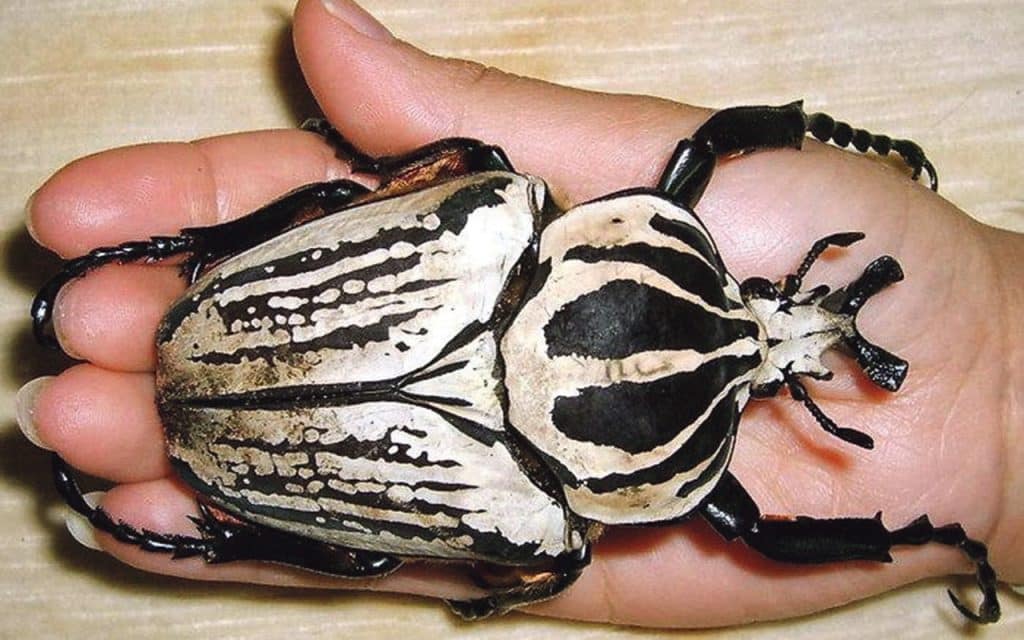Now summer is nearly here, those of us whose powers of observation haven’t been extinguished by technology will notice many more insects around. For most people, unfortunately, insects are nasty creepy-crawlies that sting, bite or buzz, and must therefore be swatted. But insects, as well as being the most numerous animals on the planet, are also the most important. If humans all died out tomorrow, few animals or plants would notice – most would be thoroughly relieved. But if insects vanished from the earth, and many are already doing so, the planet would quickly become a very different place.
There are about thirty orders of insects; the average person is vaguely familiar with eight or nine. The largest of these orders is Coleoptera, the beetles. A quarter of all known animal species are beetles. Many remain un-described – there might be more than a million species; there are over 2,000 in Ireland. Beetles range in size from tiny things only an entomologist would know, to the gigantic Hercules beetle of South America, the males of which can grow to more than 16 centimetres.
Beetles are distinguished from other insects by their first pair of wings. These are not used for flying, but are modified into hard, often colourful structures called elytra, which protect the delicate wings underneath, reduce desiccation, and make beetles more difficult to eat.
Some beetles are pests, for example, the weevils which, with their long snouts, look rather amusing, but can be devastating to farmers. The weevil family contains the greatest number of described insect species – 83,000. Other coleopteran pests include the Colorado beetle which loves potatoes, click beetle larvae (wireworms) which eat many root crops, and various wood-boring beetles, which munch through your furniture or infect trees with harmful fungi. But more beetles are helpful, like ladybirds, which feed on greenfly, and ground beetles, which are predators of caterpillars and other garden pests.

One particularly interesting group is the scarab family, which contains some of the largest (Hercules and Goliath beetles) and most beautiful beetles, for example fruit chafers. Dung beetles are also scarabs. In warmer countries, they are a common sight, rolling their balls of dung, from cow or elephant, along the ground. When a suitable place is found, the beetle digs a hole, buries both itself and ball, and feasts on the dung in the privacy of its own dining room. Females lay their eggs in dung balls, which they also bury, the dung serving as home and food for the developing larva. By burying dung, these beetles recycle nutrients, improve soil structure and disperse any seeds that were in the dung. In Ireland, the big, black dor beetle does much the same job.
To the ancient Egyptians, the beetle Scarabaeus sacer, pushing its precious dung ball, represented their god Khepri moving the sun across the sky. So Khepri had a beetle for a head, and the species is known today as the sacred scarab.
Beetles are found in a great variety of habitats. Diving beetles live in ponds and carry air bubbles, like humans using aqualungs; darkling beetles survive in the desert, drinking dew drops that collect in the dimples on their wing covers.
Fireflies are little beetles that produce light in order to attract mates. The most beautiful beetle experience I ever had was with fireflies. I was in Malawi, sitting on the carrier of a bicycle, the owner of which was simultaneously pedalling, trying to persuade me to marry his daughter and clutching a crate of beer. The sun had set, the night sky was magnificent – no light pollution there – and the fireflies emerged. They were everywhere, lighting up the roadside bushes, landing on our heads and clothes. It was like cycling through the stars.
I once had a job collecting beetles in a Spanish lignite mine. I was working for my friend, Dr. Jervis Good, an entomologist who used rove beetles (staphylinids) as indicators of soil quality. The mine company wanted to know how land was recovering after parts of the mine were closed – the more species of beetle, the better the soil. Staphylinidae is the second largest family of beetles. They are distinctive because their elytra are very short, so much of their bodies are uncovered and they look a bit like earwigs, without the pincers. The largest staphylinid found in Ireland, up to three centimetres long, is the Devil’s Coach Horse, which, if threatened, curls up its abdomen.
Collecting beetles was very popular among educated gentlefolk in Victorian times – Charles Darwin was a particularly avid collector. Beetles are still collected today, but in far greater numbers – one can buy beetles now online, which is seriously endangering the biggest and most colourful species.
In parts of Asia, beautiful shiny jewel beetles are used to make jewellery and works of art. Various types of rhinoceros beetle find themselves, sadly, contestants in the sport of beetle fighting; in Japan, one can even buy fighting beetles from street vending machines. Over 300 species of beetle are eaten by humans.
A beetle even saved the life of an eminent zoologist. In 1793, during the French Revolution, Pierre André Latreille was imprisoned for refusing to swear allegiance to the new state. He probably would have died in captivity, but one day the prison doctor found him examining a beetle on his cell floor. Latreille identified it as Necrobia ruficollis, which so impressed the doctor, he sent it to another naturalist, from an influential noble family, who managed to get Latreille released. This beetle, interestingly, is often found eating dead bodies, so it is important in the field of forensic entomology.
The scariest beetle I ever saw was in Uganda. I was living at the time in a small hotel in Kampala, in the garden of which was a large fig tree. One morning, I was poking around in the broken bark of this tree when something squeaked loudly, making me jump. I looked closer, and there was a pair of giant African longhorn beetles, Petrognatha gigas, terrifying insects whose name means ‘giant stone jaw’. They were very well camouflaged, with grey and black bodies and long, twig-like legs and antennae. Every evening they emerged from their crack in the bark, and clambered to the upper foliage where they spent the night hunting. A couple of months later, after the first rains, I found the two beetles at the base of the fig tree, dead. They had mated and the female laid her eggs. I put them into a bottle of Ugandan gin, and brought them back to Ireland for Dr. Good.
Beetle collecting is not the only threat to these wonderful insects. The magnificent Goliath beetle, which can weigh up to 100 grams, is endangered because of the demand for chocolate – its rain forest home in West Africa is being cleared to make way for cocoa plantations. Most insects, not just beetles, are suffering because of human activity, particularly pesticides, climate change and habitat loss. Deforestation in the Amazon is killing off so many insects, species are probably being wiped out before they are even discovered.
Without insect pollinators, many of our food plants would become extinct; with no insect scavengers, the bodies of dead animals would pile up. There would be no food for birds and bats, and who would want to live in a world without butterflies?
So what should we be doing to help insects? This month, people are encouraged to leave their lawns un-mowed so that insects can complete their life-cycles undisturbed. I cannot comprehend this modern obsession with immaculate green lawns. Long ago, only the very rich had lawns, but now, unfortunately, everyone grows grass instead of vegetables, and seems wealthy enough to have, or employ, whole armouries of noisy machines to cut it (and annoy the neighbours). Some now even have abominable robots to do it for them.
And why this hatred of daisies and dandelions? They are not only prettier than blades of grass, they also supply food for insects. Let them grow as long as they can. Many studies have shown, obviously, that less frequent grass cutting results in greater biodiversity – more good insects and birds – and fewer pests. Sir David Attenborough – there is no better authority – suggests delaying lawn mowing until mid-July.
And what could ever be so horrible in your garden that you would spray poison on it, in a place where you, your children and your pets often sit or play? Perhaps herbicides are harmful to humans, perhaps not, but they are certainly poisonous to insects.
Why not let a corner of your garden go wild, or at least put away that diabolical strimmer and leave the verges uncut – those spaces are like motorways for beetles and other insects, as well as for voles, shrews and, if you are lucky, hedgehogs.
‘No Mow May’ is a good slogan; ‘No Mow Spring and Summer’ is even better.



